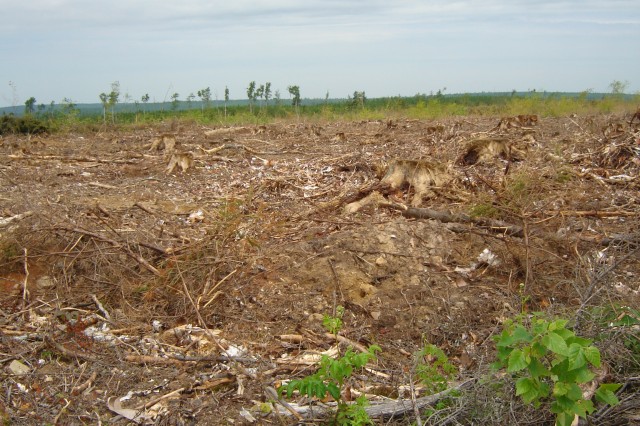Conservation Council of New Brunswick Media Release
Fredericton – Premier David Alward is promising good news for the forest industry in response to their lobbying efforts for long-term access to timber supply. The Conservation Council encourages the Alward government to consider the long-term health of New Brunswick’s mixedwood forest and our forest dependent communities in the face of pressure to give away more of our public forest to an industry concerned foremost with profit.
“What’s good for the forest industry is not good for our forest and our communities. Timber harvested from public land in New Brunswick reached a record high of 5.4 million cubic metres in 2006/2007 at a time when mill closures across the province were leaving scores of people unemployed and communities devastated. It’s time to write a new story for our forest–one where corporations do not control it, clearcut it and convert it into tree farms, one where our people take care of it, bring it back to health and make a meaningful living from its diverse and bountiful products and services,” says Tracy Glynn, Forest Campaign Director at the Conservation Council.
An all-party legislative committee on wood supply, formed in response to public outcry to industry demands to double the rate of cut in the public forest, made 24 recommendations based on public input it received in 2004. Recommendations included reducing the amount of clearcutting, maintaining natural forest diversity and assigning wood allocations to communities when mills close. The recommendations were largely ignored by every government that has since formed in New Brunswick.
New Brunswick’s forest is a meeting place where the northern boreal forest blends with southern hardwood forests creating remarkable biodiversity and beauty. “There are 32 native tree species found in New Brunswick’s forest but a drive along New Brunswick highways often reveals plantations of pine, spruce or fir that look nothing like an old mixedwood forest,” says Glynn.
Today, New Brunswick no longer has any large intact naturally undisturbed forests outside our parks and we continue to douse our lands with chemicals to stop natural regrowth to grow tree farms: observations that the Conservation Council has researched, mapped and communicated to the public for decades.
Resistance against forest degradation for private accumulation of wealth has and continues to be resisted in New Brunswick. Indigenous peoples have never consented to the clearcutting of forest on lands they never ceded. Workers in Northern New Brunswick woods burned harvesting machines when they first entered the woods in the 1980s. University students rallied against clearcutting the Christmas Mountains in the 1990s. People from Kedgwick in the north to Alma in the south have rallied and gone to markets and shopping malls to collect signatures to petitions against spraying our forests with herbicides.
A 2008 survey of public attitudes on forest management of public lands carried out by researchers at the University of New Brunswick and the Canadian Forest Service for the Department of Natural Resources showed that New Brunswickers felt that protection of water and biodiversity should be priorities over ensuring more wood supply for the industry in forest management. CCNB was ranked high as organizations most trusted to have a say in forest management.
“Many people in our forest-dependent communities made a living in the woods for over a century but few do so today with the closure of mills and woodlot owners unable to compete with the cheap wood that J.D. Irving harvests from our public forest. We have people across this province asking for support for community forest initiatives. It’s time that the government support those efforts,” said Glynn.
-30-
Tracy Glynn, Forest Campaign Director, Conservation Council, 458-8747, forest@conservationcouncil.ca

